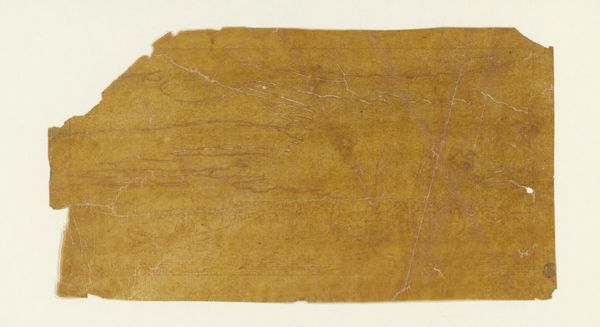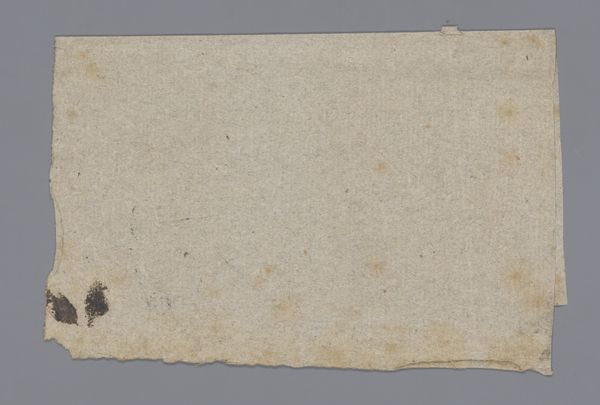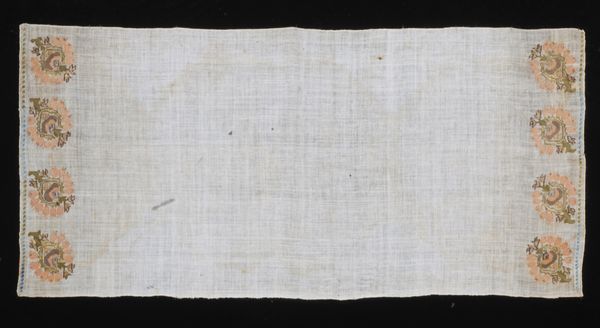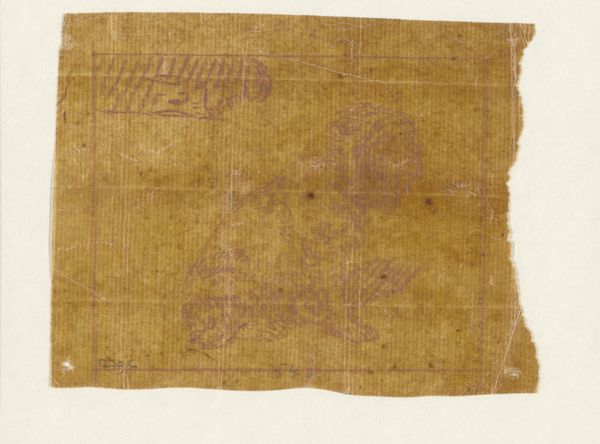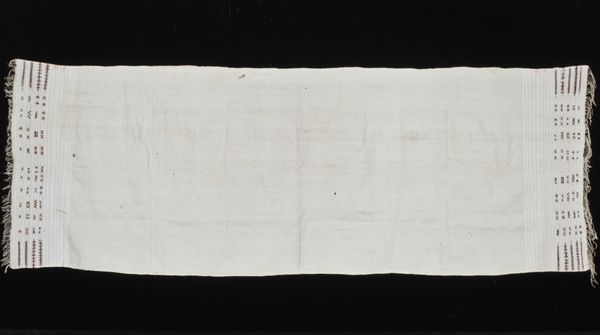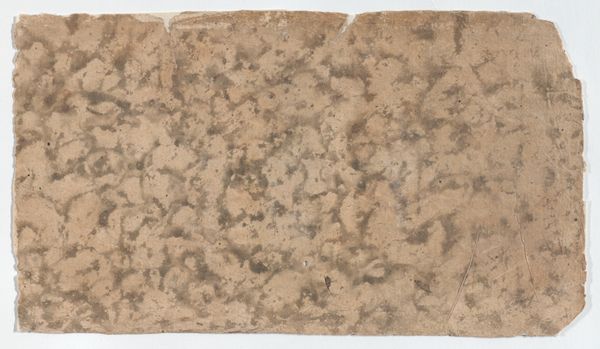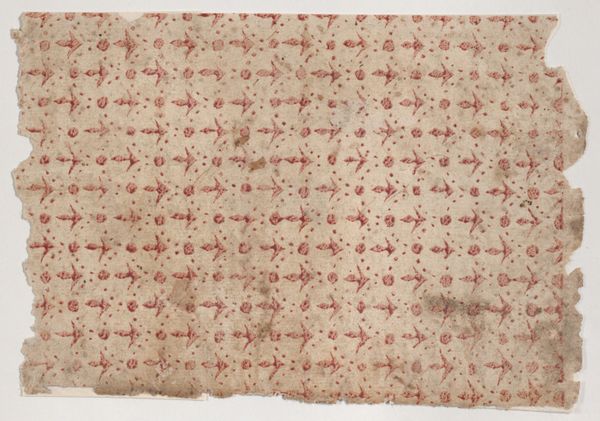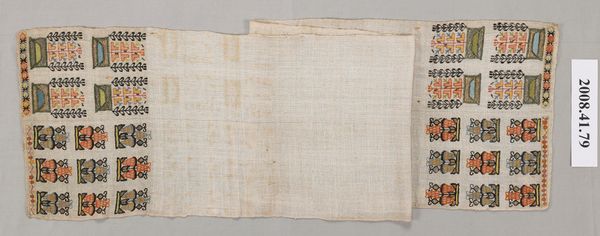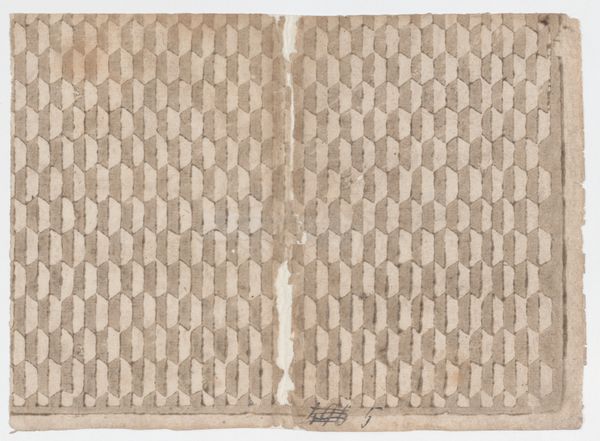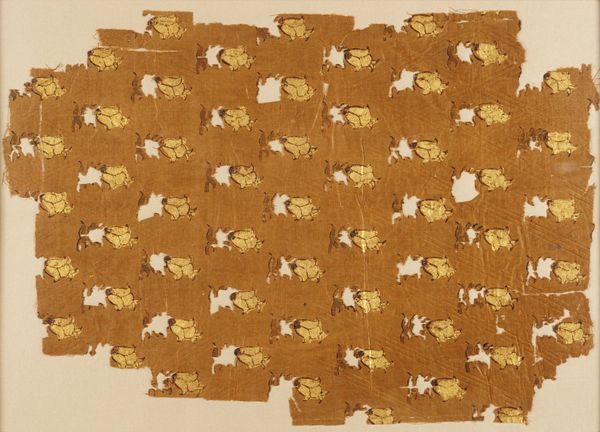
drawing, print, paper, watercolor, ink
#
drawing
#
organic
#
water colours
# print
#
paper
#
watercolor
#
ink
#
organic pattern
#
line
Dimensions: Sheet: 6 1/8 in. × 4 in. (15.6 × 10.1 cm)
Copyright: Public Domain
Curator: At first glance, it feels like a faded memory—a piece of textile, almost. Fragile and hinting at something lost. Editor: Indeed. What strikes you as particularly resonant? Let’s consider this "Sheet with stripe and floral pattern" a work created sometime between 1800 and 1900, presently housed here at the Met. Its construction, from the interplay of drawing, print, watercolor, and ink on paper, positions it as more than a simple decorative element. I would ask, what is being expressed beyond just aesthetic value? Curator: There's a tenderness in the way the florals are rendered, like they're breathing. A ghostly wallpaper or the trace of a life lived against it, which resonates deeply with concepts of domesticity, especially for women. The horizontal lines constrict the organic forms, perhaps speaking to social constraints and the control of nature versus wildness. I think the way it's aging, the staining... well, it hints at resistance too, endurance against the odds. Editor: The repetition feels almost like an enforced rhythm. A sort of silent scream against those very constrictions. To what degree, then, does this resonate in current dialogues concerning ecological crisis and social imbalance, and how do we situate it alongside other contemporaneous pieces that may celebrate this so-called mastery of the natural world, particularly from a patriarchal viewpoint? It seems an indictment against systems of power using something conventionally feminine—patterns and floral motifs—as a vehicle. Curator: It disrupts any simple notions of beauty. Like weeds pushing through the cracks in pavement, maybe this small scrap is telling us that coded resistance simmers just below seemingly tranquil surfaces. Editor: An eloquent point. And, so, by exploring its textures and hidden narratives we can come to regard art’s impact as both deeply felt and undeniably linked with histories and urgent social challenges of now.
Comments
No comments
Be the first to comment and join the conversation on the ultimate creative platform.
